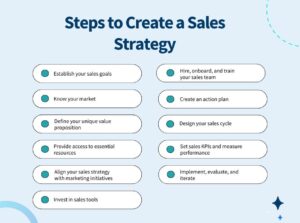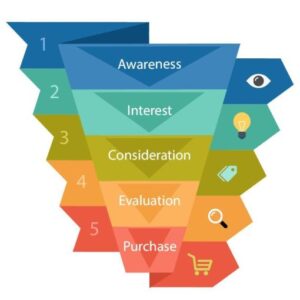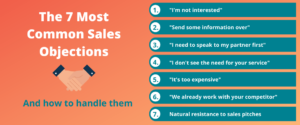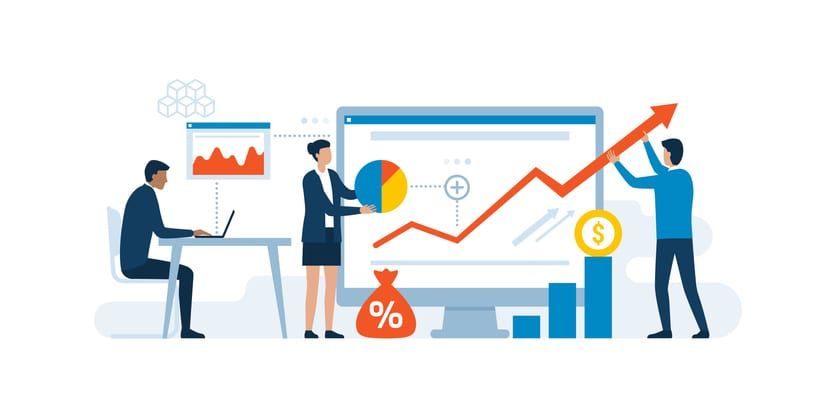In the high-stakes world of sales, the difference between a mediocre performer and a top-producing superstar lies in their ability to close deals with precision and consistency. It’s a skill that can make or break a business, separating the leaders from the laggards. But what sets the top closers apart? Is it their charisma, their product knowledge, or their ability to read people? The truth is, it’s a combination of these factors, along with a deep understanding of the sales process and proven strategies to overcome objections, build rapport, and negotiate with confidence. This comprehensive guide equips you, the sales leader, with the knowledge and tools to closing deals like a pro. Whether you’re a seasoned sales veteran or just starting out, this guide will give you the tools and techniques you need to take your sales game to the next level.
1.Crafting a winning sales strategy: The cornerstone of profitable growth

The foundation of any successful sales operation rests upon a solid sales strategy. It’s the roadmap that guides your team towards achieving ambitious goals, maximizing conversions, and ultimately, driving significant profits for your business. But crafting a winning sales strategy isn’t simply about setting lofty targets and hoping for the best. It requires meticulous planning, a deep understanding of your target market, and a clear articulation of the unique value you offer. Here are essential elements of crafting a winning sales strategy:
Setting SMART goals
The first step is establishing a clear direction for your sales team. Setting SMART goals provides your team with a clear target and a roadmap for getting there. Here’s where SMART goals come into play.
Specific: Your goals should be well-defined and unambiguous. Instead of aiming for “increase sales,” set a goal like “increase sales of product X by 20% in the next quarter.”
Measurable: Ensure your goals are quantifiable. This allows you to track progress and measure success.
Achievable: While ambition is crucial, set goals that are realistic and attainable for your team based on market conditions, resource availability, and past performance.
Relevant: Align your sales goals with your overall business objectives. For example, if your company is launching a new product line, your sales goals should focus on promoting and selling those new products.
Time-bound: Establish a timeframe for achieving your goals. This creates a sense of urgency and keeps your team focused on achieving results within a specific period.
Knowing your ideal customer
Sales success hinges on understanding who you’re selling to. Developing a detailed buyer persona is essential. This persona is a fictional representation of your ideal customer, encompassing their demographics (age, income, location), psychographics (values, interests, lifestyle), business needs (challenges, goals), and buying behaviors (preferred communication channels, decision-making process). Here are some tips for creating a buyer persona:
a) Conduct market research and gather customer data through surveys, interviews, and focus groups.
b) Analyze website traffic and customer demographics.
c) Talk to your existing sales team for insights into successful customer interactions.
Crafting a compelling value proposition
In a crowded marketplace, what makes your product or service stand out? This is where your value proposition comes in. It’s a concise statement that clearly articulates the unique benefit your offering delivers to your ideal customer. A strong value proposition should address three key questions:
a) What problem do you solve? Identify the specific challenge your product or service addresses for your target customer.
b) How do you solve it? Explain how your offering provides a solution that is superior to alternatives.
c)What value do you deliver? Highlight the tangible benefits your customer will experience by using your product or service.
Developing a winning sales process
A streamlined and repeatable sales process is the backbone of your sales operation. It guides your team through each stage of the customer journey, from initial lead generation to closing the deal and nurturing long-term customer relationships. Here are some key elements of a winning sales process:
a) Lead generation: Identify effective strategies to attract potential customers, such as content marketing, social media marketing, or targeted advertising campaigns.
b) Lead qualification: Not all leads are created equal. Establish a system for qualifying leads to identify those most likely to convert into paying customers.
c) Lead nurturing: Engage with qualified leads through personalized communication and provide valuable content that addresses their specific needs.
d)Presentation and demonstration: Equip your sales team with the skills and tools to deliver compelling presentations and product demonstrations that showcase the value of your offering.
e) Negotiation and closing: Train your team on effective negotiation techniques to secure deals and maximize profit margins.
f) Customer onboarding and relationship management: The sale doesn’t end after closing the deal. Develop a process for onboarding new customers and fostering long-term relationships to ensure repeat business and positive word-of-mouth marketing.
Here are some additional tips for developing a winning sales process:
Tailor your sales process to your specific industry and product/service.
Automate repetitive tasks such as lead scoring and email follow-ups using sales automation tools.
Regularly review and refine your sales process based on performance data and customer feedback.
2.Empowering your sales team: Unleashing the potential of your high-performance engine

Your meticulously crafted sales strategy is the blueprint for success, but it’s your sales team who brings it to life. They are the driving force behind closing deals, exceeding goals, and ultimately generating revenue for your business. However, expecting peak performance without proper support is a recipe for disappointment. To unlock the full potential of your sales team and propel them towards achieving exceptional results, you need to cultivate an environment of empowerment. Here are essential strategies for empowering your sales team, transforming them from order-takers into strategic sales consultants who consistently exceed expectations.
Recruiting the right people
Building a high-performing sales team starts with hiring the right people. It’s not just about sales experience; it’s about finding individuals who possess the right blend of skills, experience, and attitude. In addition, hiring individuals who align with your company values and work style creates a more cohesive and productive team environment. Here are some key qualities to look for when recruiting salespeople:
a) Strong communication and interpersonal skills: The ability to connect with customers, build rapport, and articulate the value proposition is essential.
b) Product knowledge and industry expertise: In-depth knowledge of your product or service and the competitive landscape empowers your team to address customer concerns and objections effectively.
c) Hunting mentality: Top performers possess a natural drive to succeed and a relentless pursuit of achieving goals.
d) Resilience and perseverance: The sales process can be challenging, and successful salespeople possess the grit and determination to overcome setbacks and keep pushing forward.
e) Teamwork and collaboration: While individual performance is important, fostering a collaborative environment where salespeople support and learn from each other is crucial for overall team success.
Investing in training and development
Sales is a continuous learning process. Equipping your team with the necessary knowledge and skills is paramount for their success. Investing in ongoing training and development, you empower your team with the tools and knowledge they need to excel in today’s competitive sales landscape. Training programs that cover:
a) Product knowledge and updates: Ensure your team is thoroughly versed in all aspects of your product or service, including its features, benefits, and unique selling points.
b) Sales methodology and best practices: Train your team on effective sales techniques, such as active listening, objection handling, and negotiation strategies.
c) Industry trends and competitor insights: Keep your team abreast of the latest industry trends and equip them with knowledge of your competitors’ offerings and strategies.
d) Customer relationship management (CRM) tools: Provide training on how to leverage your CRM system to its full potential for managing leads, tracking customer interactions, and generating reports.
Establishing clear performance expectations and fostering motivation
Empowering your sales team goes beyond just hiring and training. To truly unleash their potential, you need to create a work environment that is both structured and motivating. This means setting clear expectations for performance while simultaneously fostering a culture of recognition, reward, and healthy competition. Imagine a skilled athlete competing in a game without knowing the rules. That’s essentially what happens when your sales team lacks clarity on what constitutes success. Clear performance expectations provide your team with a roadmap for achieving their goals and exceeding your expectations. Here’s how to establish clear performance expectations:
a) Define Key Performance Indicators (KPIs): Identify the metrics that matter most for your sales team’s success. These might include number of new leads generated, conversion rates, average deal size, and customer acquisition cost.
b) Set SMART goals (Specific, Measurable, Achievable, Relevant, and Time-bound): Establish individual and team goals that are specific, quantifiable, and achievable within a defined timeframe.
c) Communicate expectations clearly: Clearly communicate your performance expectations to your sales team. This includes outlining KPIs, individual/team goals, and the metrics you’ll use to track progress.
Benefits of clear performance expectations:
a) Increased accountability: When salespeople understand what’s expected of them, they take greater ownership of their results.
b) Improved performance: Clear expectations provide a framework for improvement and guide salespeople towards achieving their goals.
c) Enhanced motivation: Knowing what constitutes success motivates salespeople to work harder and strive for excellence.
d) Data-driven decision making: Performance data allows you to identify areas for improvement and adjust your sales strategy accordingly.
Fostering a culture of motivation and recognition
While clear expectations are important, a truly empowered sales team thrives in an environment that fosters motivation and recognition. Here’s how to cultivate such an environment:
a) Create a positive and competitive culture: Encourage a positive and collaborative work environment where salespeople support each other and celebrate each other’s successes. Healthy competition can also be a powerful motivator, so consider implementing sales contests or leaderboards to recognize top performers.
b) Offer regular feedback and coaching: Provide regular feedback to your salespeople, both positive and constructive. This feedback should be specific and actionable, helping them identify areas for improvement and refine their skills. Regular coaching sessions can also be invaluable for boosting performance.
c) Recognize and reward achievements: Don’t wait for annual reviews to acknowledge outstanding performance. Publicly recognize and reward your top performers, whether it’s through verbal praise, bonuses, or other incentives. Recognition reinforces positive behaviors and motivates others to strive for excellence.
-
Leveraging technology: Supercharge your sales efficiency and gain a data-driven advantage

The right sales tools can act as a force multiplier, streamlining processes, automating repetitive tasks, and unlocking valuable data insights that empower your team to close more deals and achieve peak performance. This section dives into the essential technology tools that can transform your sales operation into a well-oiled machine:
Sales automation tools
Salespeople spend a significant amount of time on administrative tasks like data entry, scheduling meetings, and sending follow-up emails. Sales automation tools can alleviate this burden by automating these repetitive tasks, freeing up valuable time for your team to focus on what they do best – building relationships, closing deals, and exceeding sales quotas. Here are some of the key functionalities offered by sales automation tools:
a) Lead generation: Automate lead capture forms, email marketing campaigns, and social media lead generation activities.
b) Lead qualification and scoring: Assign scores to leads based on their demographics, behavior, and interest level, allowing your team to prioritize high-quality leads.
c) Workflow automation: Automate task sequences, such as sending personalized email follow-ups based on specific customer interactions or triggers.
d) Reporting and Analytics: Generate reports that provide insights into sales activity, pipeline health, and key performance indicators (KPIs).
Customer Relationship Management (CRM) software
In the complex world of sales, managing customer relationships and tracking interactions is crucial for success. A robust CRM system acts as a centralized hub for managing all your customer data, interactions, and sales opportunities. Here’s what a CRM can do for your sales team:
a) Centralized customer data management: Store all customer information, including contact details, purchase history, communication history, and preferences in one easily accessible location.
b) Sales pipeline management: Visualize your sales pipeline, track the progress of deals, and identify potential roadblocks.
c) Opportunity management: Manage quotes, proposals, and contracts within the CRM system, streamlining the sales cycle.
d) Enhanced collaboration: Facilitate communication and collaboration between sales reps and other departments (e.g., marketing, customer service) to ensure a seamless customer experience.
Data Analytics
In the age of big data, information is power. Data analytics empowers you to harness the vast amount of data generated by your sales activities and transform it into actionable insights. Here’s how data analytics can benefit your sales team:
a) Identify sales trends and patterns: Analyze sales data to identify trends and patterns in customer behavior, buying cycles, and lead conversion rates.
b) Measure sales performance: Track key performance indicators (KPIs) like conversion rates, average deal size, and customer lifetime value to measure sales effectiveness.
c) Optimize sales strategy: Use data-driven insights to optimize your sales strategy, identify areas for improvement, and allocate resources more effectively.
d) Improve targeting and personalization: Leverage customer data to personalize your sales outreach and target the right audience with the right message at the right time.
4. Optimizing your sales funnel: The conversion engine that fuels growth

Imagine a leaky pipe – you pour in water (potential customers), but very little comes out the other end (closed deals). That’s essentially what happens when your sales funnel isn’t optimized. A well-defined and optimized sales funnel acts as the conversion engine for your business, systematically guiding potential customers through a series of steps that culminate in a sale. We will explore into the key stages of your sales funnel and explore strategies to optimize each stage, ensuring a smooth flow of leads towards conversion and ultimately, revenue generation.
Stage 1: Lead generation – attracting your ideal customer
The foundation of any successful sales funnel is a steady stream of qualified leads. These are potential customers who have shown interest in your product or service and possess the characteristics of your ideal customer profile. Here are some effective lead generation strategies to consider:
a) Content marketing: Create valuable and informative content (blog posts, articles, white papers, infographics, etc.) that addresses your target audience’s pain points and interests. This content attracts potential customers to your website and establishes you as a thought leader in your industry.
b) Social media marketing: Leverage social media platforms like LinkedIn, Twitter, and Facebook to connect with potential customers, share your content, and engage in conversations. Utilize targeted advertising options to reach a highly relevant audience.
c) Search Engine Optimization (SEO): Optimize your website content and landing pages to rank higher in search engine results pages (SERPs) for relevant keywords. This organic visibility increases the chances of potential customers finding your business when they search for solutions to their problems.
d) Pay-Per-Click (PPC) advertising: Run targeted PPC campaigns on search engines and social media platforms to drive qualified traffic to your website and landing pages.
Stage 2: Lead qualification – separating the wheat from the chaff
Not all leads are created equal. Some are more likely to convert into paying customers than others. Lead qualification is the process of identifying those leads with the highest potential for conversion. Here are some ways to qualify leads:
a) Lead scoring: Assign points to leads based on their demographics, firmographics (company size, industry), behavior on your website, and engagement with your content. Leads with higher scores are considered more qualified and are prioritized by your sales team.
b) Lead qualification forms: Use website forms or landing pages to capture lead information such as contact details, job title, and company size. This information can be used to assess their fit for your product or service.
c) Behavioral targeting: Track visitor behavior on your website to identify which pages they visit and what content they engage with. This can provide valuable insights into their interests and buying intent.
Stage 3: Lead nurturing – building relationships and trust
Once you’ve identified qualified leads, it’s time to nurture them. Lead nurturing is the process of building relationships and trust with potential customers through personalized communication and by providing valuable content that addresses their specific needs and challenges. Here are some effective lead nurturing strategies:
a) Email marketing: Develop targeted email marketing campaigns that provide educational content, industry insights, and product or service information relevant to the lead’s interests and stage in the buyer’s journey.
b) Personalized communication: Go beyond generic messages and personalize your communication with leads based on their needs and interests. This demonstrates that you understand their challenges and have solutions to offer.
c) Drip campaigns: Set up automated drip campaigns that deliver a series of emails over a defined period, gradually nurturing leads towards a purchase decision.
Stage 4: Negotiation and closing – securing the deal and maximizing profitability
The final stage of your sales funnel is where all your efforts culminate –closing the deal. Here’s where your sales team steps in, equipped with the necessary skills and knowledge to negotiate effectively and secure profitable sales.
a) Equipping your sales team for success
Sales training: Invest in ongoing sales training that equips your team with effective negotiation and closing techniques. This training should cover topics such as active listening, objection handling, value proposition articulation, and closing strategies.
Product knowledge: Ensure your sales team possesses a deep understanding of your product or service, its features, benefits, and unique selling points. This empowers them to address customer concerns effectively and demonstrate the value proposition convincingly.
Role-playing and simulations: Provide opportunities for your sales team to practice their negotiation and closing skills through role-playing exercises and sales simulations. This allows them to hone their techniques in a safe environment and receive constructive feedback.
b) Strategies for effective negotiation and closing:
Focus on value, not price: Shift the conversation away from price and focus on the value your product or service delivers to the customer’s business. Highlight the return on investment (ROI) and how your offering solves their specific problems.
Active listening and objection handling: Develop strong active listening skills to understand customer needs and concerns. Be prepared to address objections effectively by providing clear and concise answers that demonstrate the value proposition.
Trial closes: Use trial closes throughout the sales conversation to gauge the customer’s interest and identify areas where objections might arise. This allows you to adjust your approach and address concerns proactively.
The art of the close: Present a clear call to action and guide the customer towards a closing decision. Offer different options or packages to cater to their specific needs and budget.
Tips for optimizing your sales funnel:
Track key metrics: Monitor key metrics at each stage of the funnel, such as lead generation volume, lead qualification rate, conversion rate at each stage, and average deal size.
A/B testing: Test different elements of your sales funnel, such as landing page copy, calls to action, and email marketing campaigns to identify what resonates best with your target audience.
Utilize sales analytics tools: Leverage sales analytics tools to gain deeper insights into your sales funnel performance and identify areas for improvement.
Customer feedback: Actively seek feedback from customers at different stages of the buyer’s journey. This feedback can be invaluable for identifying pain points and improving the overall customer experience.
Overcoming objections: Proven strategies for handling common sales objections

The art of overcoming objections – a crucial hurdle that stands between you and a successfully closed deal. It’s a moment of truth that can make or break a sale, and yet, many sales professionals struggle to navigate this delicate dance. But fear not, dear reader, for we’re about to dive into the most common sales objections and the proven strategies to overcome them. From the classic “your price is too high” to the more nuanced “I need to think about it,” we’ll explore the tactics and techniques that will help you stay one step ahead of your prospects’ concerns. Whether you’re a seasoned sales veteran or just starting out, this section will arm you with the confidence and expertise to tackle even the toughest objections, and close deals like a pro. So, buckle up and get ready to turn those “no’s” into “yes’s!” Here’s a proven four-step framework for handling objections:
Acknowledge and validate: First, acknowledge the prospect’s objection and show empathy for their concern. Let them know you understand their perspective by phrases like “That’s a valid concern,” or “I completely understand where you’re coming from.”
Ask clarifying questions: Don’t assume you know the root cause of the objection. Ask clarifying questions to get a deeper understanding of their specific concern. This might involve questions like “Can you tell me more about why price is a concern?” or “What hesitations do you have about moving forward?”
Address the objection directly: Once you understand the objection, provide a clear and concise response that directly addresses their concern. Focus on the benefits your product or service offers and how it solves their specific problem. Use data, testimonials, or case studies to support your claims.
Confirm and move forward: After addressing the objection, confirm their understanding by asking “Does that answer your question?” Then, transition the conversation forward by asking if they have any other questions or by guiding them towards the next step in the sales process.
Common objections and how to overcome them:
Here’s a breakdown of some of the most frequent sales objections and strategies for addressing them:
“Your price is too high”: Don’t get defensive! Focus on the value proposition. Explain how your product or service saves them money in the long run, increases productivity, or solves a critical problem that justifies the cost. You can also offer alternative pricing options or payment plans.
“I need more time to think about it”: This often indicates they haven’t fully grasped the value you offer. Briefly reiterate the key benefits and address any lingering concerns. Offer to answer any further questions they might have and suggest a specific timeframe for a follow-up conversation.
“We’re happy with our current provider”: Acknowledge their satisfaction but gently probe for any areas where their current solution might be lacking. Highlight how your offering addresses those shortcomings and provides additional benefits.
“We don’t have the budget”: Explore their budget constraints. Can you offer a scaled-down version of your product or service that meets their immediate needs? Perhaps there’s room for negotiation or financing options.
Conclusion
Throughout this comprehensive guide, we’ve explored a wealth of effective sales management strategies and powerful sales tools designed to empower you to transform your sales operation into a well-oiled engine for growth. The tactics and techniques outlined here, will equip your sales team with the knowledge, skills, and resources they need to excel. Remember, achieving sustainable sales success is not a one-time feat; it’s a continuous journey of refinement, adaptation, and data-driven decision making. Fostering a culture of continuous improvement, actively seeking customer feedback, and leveraging the power of sales analytics, you can ensure your sales funnel remains efficient and effective in converting leads into loyal customers.

